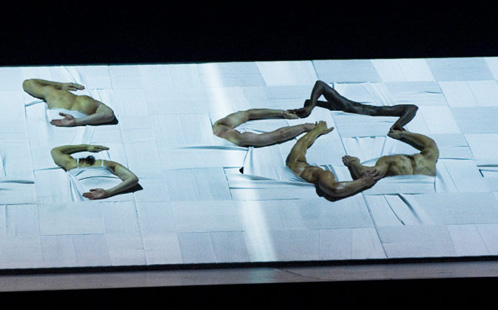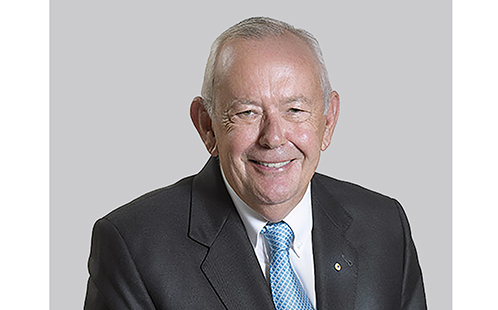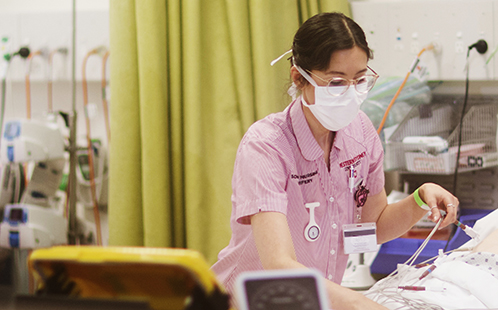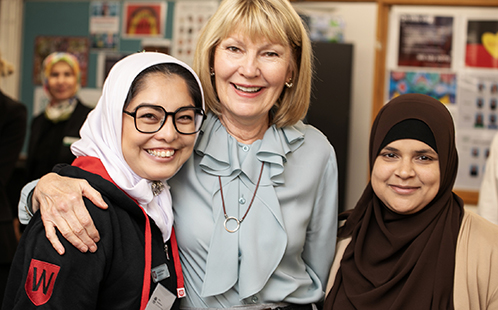Study finds collaboration plays key role in innovation

The role of collaboration in sparking new forms of creativity and innovation has been highlighted in a landmark research project featuring the University of Western Sydney and the Australian Dance Theatre(opens in a new window).
The Thinking Brains & Bodies project started from the idea that thinking is not restricted to the brain of an individual, but can be distributed across a group.
Questions such as where does creativity reside, how does collaboration impact innovation and what fosters group recollection have been researched at the Australian Dance Theatre headquarters for the past year.
The Project leader, Professor Kate Stevens from the UWS MARCS Institute, says the early outcomes have exciting implications for long-term memory, with applications in the Arts community and a broader range of industries.
"One hypothesis examined was 'distributed cognition', the idea that thinking and memory are not restricted to the brain of one person but spread across a group," says Professor Stevens.
"Preliminary results indicate that dancers generated more movement ideas when they created material collaboratively than when they did so alone. Whether the collaboration was novel or familiar also made a difference."
"Dancer memory was further influenced by context, such as whether material had been performed before an audience, or if the material was from a duet or group work. Results suggest that the knowledge may be shared or distributed across dancers."
Professor Stevens says this 'distributed cognition' hypothesis can be applied to many different kinds of groups and decision-making settings – from business boardrooms to the living room.
"The dance ensemble provides 'a natural laboratory' for testing distributed cognition – a kind of intellectual bodystorming in a real-world setting," said Professor Stevens.
Dr Scott deLahunta, from Coventry University, has worked on research projects with dance companies in Europe and facilitated interactions between researchers and dance artists.
Dr deLahunta says the ADT dancers were included in designing the experiments where possible.
"To investigate long-term memory for dance, the researchers collaborated with the dancers to break new ground and come up with a new experimental method," he says.
"From a planning session with the dancers, we were able to establish the approach and selected the material that would be recorded in the experiment. Results revealed the way human memory is multimodal – verbal, visual, auditory, kinesthetic, motoric."
"Methodological experimentation such as this is essential if artists are going to work together with other fields to deepen our understanding of dance and the creative arts."
With the support from the Australian Research Council Linkage Project scheme and the ADT, the research project, which began in February 2014, is due to be completed in 2017.
This project has and will continue to tackle complex research problems and as such the research team has come from many disciplines. Lead by Professor Kate Stevens, other researchers include dance researchers Dr Scott deLahunta from Coventry University and Motion Bank, The Forsythe Company, Professor Kim Vincs from Deakin University, anthropologist Professor James Leach from the University of Western Australia, cognitive neuroscientist Professor Mike Nicholls from Flinders University, and cognitive scientist Professor David Kirsh from the University of California, San Diego.
Ends
Photo: Australian Dance Theatre
24 Wednesday 2015
Latest News

Western Sydney University receives transformational donation to support LGBTIQA+ community
Western Sydney University has welcomed a philanthropic donation from The Brennan Lynch Foundation.

Western Sydney University ranks among world’s best for 23 subjects
The University has been named as one of the world’s top universities for the study of 23 subjects in the latest edition of the QS World University Rankings by Subject, including being ranked in the top 50 for Nursing.

Western Sydney University receives landmark $7.9 million philanthropic gift from Harvey Norman to launch leadership academy, empowering young women in Western Sydney
Western has welcomed a landmark donation to establish the Harvey Norman® Young Women’s Leadership Academy Led by Katie Page.
Mobile options:

